Florida State-ACC was a perfect marriage — until it wasn’t. Now, divorce seems inevitable
Long before the looming divorce between Florida State and the ACC, decades before the bitter legal filings and the dueling lawsuits playing out in courtrooms in North Carolina and Florida, there was something almost like romance. Not love, exactly. But mutual attraction, and the shared lust for the one thing that always drives these kinds of relationships, then like now.
They both thought they could make each other a lot of money. They were right, it turned out, though here’s the thing about relationships built on such a materialistic foundation: they only work in the good times, when the money flows just right and when the neighbor’s house and car aren’t as desirable; when, indeed, the grass isn’t greener anywhere else.
When that starts to change everything else does, too, which is now why FSU has hired an army of lawyers to attack the ACC’s Grant of Rights, and why the ACC has done the same to defend itself. Who knew, decades ago, that the greatest drama between FSU and the ACC wouldn’t come between the lines but in court, in cases that might well decide the future of major college sports?
Well, it wasn’t always this way. There were good years. Happy years. Rich years.
Many seasons that ended with trophies and jubilant celebrations. Many fiscal years that ended with large checks. The story of the relationship between Florida State and the ACC is, in many ways, the story of American college sports. It is a story of contrasting missions and the endless pursuit of revenue. It is a story of the conflict between traditionalism and what university presidents wanted college sports to be, against what they’ve always been in reality.
It’s a story of the relentless chase of more. And how, ultimately, more is never enough.
It’s a story best told from the very beginning.
A marriage of convenience
The courtship began with public rumblings of private flirtations, a conference and a school coming together to explore how they might fill each other’s needs. That’s how it started between the ACC and Florida State in the late spring and early summer months of 1990, a simpler time in college athletics and everywhere else, too.
It was a time when the Big Ten actually consisted of 10 schools. When conferences really did represent their geographic namesakes. When college basketball’s regular season commanded as much television money as football, if not more. It was a time when the Metro Conference still existed. And the Southwest Conference, too.
And a time when one league’s men’s basketball tournament was considered so valuable, so sacred, that its leaders wondered whether expansion might ruin it. Indeed, that was among the ACC’s chief concerns, at the time, about inviting Florida State: That ACC Tournament tickets, then among the most coveted in American sports, would have to be divided nine ways instead of eight.
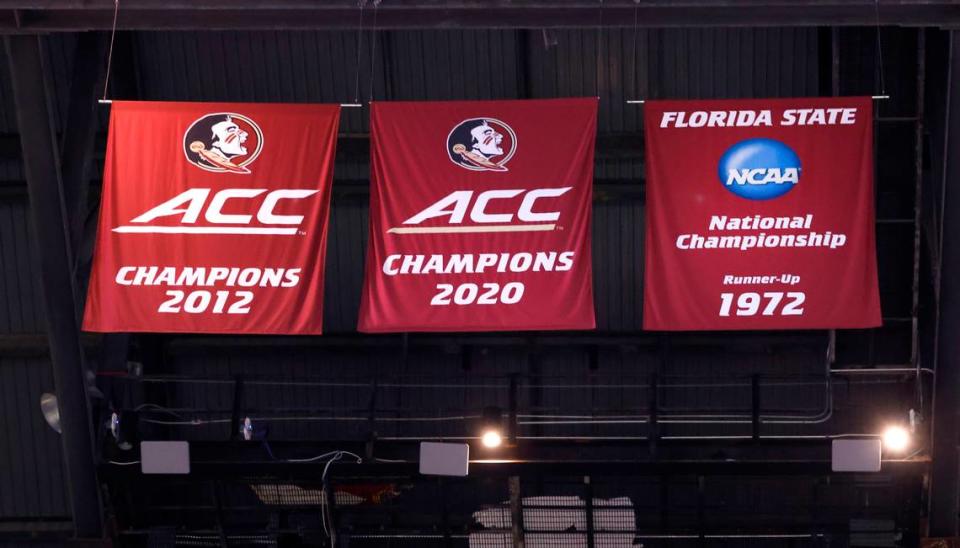
Those who might’ve been reluctant about such a thing had to get over it. Change had arrived. Notre Dame in early 1990 signed its own TV deal with NBC. The Big Ten in June of that year announced the addition of Penn State, which joined the league in 1993. The SEC in August of 1990 invited Arkansas, and then, months later, approved the addition of South Carolina, too.
The ACC had a choice to make. It wasn’t necessarily an easy or obvious one, though perhaps it should have been. Florida State was burgeoning national football power, an independent in that sport and a member of the Metro Conference in others.
The ACC was an eight-school league with a confined geographic footprint that stretched from Maryland to Georgia. The conference fancied itself as something of an ideal, an example of major college athletics as they were intended; a blend of athletic prowess and schools with a like-minded approach to academics.
The ACC was also the nation’s wealthiest conference, on a per-school distribution basis. It was seen as an innovator and a leader. Its men’s basketball TV rights were arguably the most valuable commodity in college athletics. The league’s weakness, though, was clear: football.
Seven years before he became the commissioner of the ACC, John Swofford, then the athletics director at North Carolina, spoke in June of 1990 about the changes that were to come — “much of it driven by the television marketplace, particularly football television.” He spoke of the ACC’s need, as he put it at the time, “to have some vision.”
“The worst thing would be if five years from now, we looked back at this period and felt like we didn’t have the vision or courage to take a step maybe we should have taken.”
The ACC approved its invitation to Florida State on Sept. 14, 1990. There was a press conference in Tallahassee the next day, a Saturday, before the Seminoles’ football game against Georgia Southern. Reporters and boosters and university administrators crowded into the atrium at the Moore Athletic Center. Bernie Sliger, the FSU President, stood behind the microphone.
“It is with great pleasure I accept on behalf of Florida State University your invitation to become a member of the Atlantic Coast Conference,” he said.
“I accept your acceptance,” said Gene Corrigan, the ACC Commissioner.
A 30-second ovation followed, one of four extended breaks for applause that day. In the newspapers the next morning, there were headlines about a wedding, metaphors about marriage between FSU and the ACC. It’d been a happy, hope-filled day. And now, 34 years later, they are headed toward divorce. The ACC has sued FSU. FSU has sued the ACC. Their relationship appears unsalvageable.
The ACC’s annual spring meetings begin next week on Amelia Island, Florida, and the three-day event, which usually plays out amid an air of lightness at a beachside resort, will undoubtedly come with a sense of the awkward and weird. A family is breaking up. It will be something like a forced vacation during a separation, while lawyers work to figure out the terms of the split.
No one can be sure when the divorce will be finalized. The only certainty, it seems, is that it’s coming. A marriage that was so lauded upon its beginning 34 years ago is falling apart. A relationship that was mutually beneficial, for so long, is all but over. And how did it reach this point for Florida State and the ACC? Perhaps theirs was a union destined to fail from the start.
When ACC basketball money ruled
Florida State had a choice to make, too, and over the years its decision to join the ACC has become one of those great hypothetical college sports what-ifs. What if it’d gone in a different direction? What if, instead, it’d joined the SEC? The option existed for a while. Before it settled on Arkansas, the SEC attempted to woo FSU. At that celebratory press conference in September 1990, Sliger said he “agonized” over the decision “more than any other” he’d ever made.
Yet it actually wasn’t much of a decision at all. Not when he or anyone else looked at the numbers.
“In general, the data amassed indicated the Atlantic Coast Conference would be the most appropriate choice for Florida State,” Sliger, who died in 2007, said at the time.
Translation: FSU stood to make more money in the ACC. And maybe a lot more money.
Leaders on both sides offered a certain amount of spin to downplay the pursuit of revenue. At Florida State, they talked about the academic benefit-by-association of joining a conference with the likes of Duke and Virginia and UNC. In the ACC, which only narrowly produced the votes needed to pursue expansion — Duke and Maryland voted against — they talked about strength in numbers. Paul Hardin, then the chancellor at UNC, argued that adding FSU would help the conference preserve its “values.”
Among those values, according to Hardin:
“(A)rdent, active pursuit of reform designed to enhance academic quality,” in athletics, he said upon the conference’s decision to add FSU, and “to reduce pressures on student-athletes and to reduce cost of athletics.”
Thirty-four years later, Hardin’s commentary appears especially naive, if not downright laughable. Florida State’s arrival in the ACC led to no significant reform throughout college athletics, nor in the ACC. Pressures on athletes did not decrease. Costs related to athletics did not decrease. Major college sports only continued to become bigger and bigger business. Same then as now. Same as it has always been. Which was always what the marriage between the ACC and FSU was about, anyway — two entities getting together not for the pursuit of reform but for money.
Bill McGrotha, whose name is on the press box at Florida State’s Doak Campbell Stadium, cut through the euphemisms and the PR-oriented messaging in his column in the Tallahassee Democrat the morning after the ACC voted to invite FSU.
Wrote McGrotha, a little more than two years before his death in 1993:
“Florida State did its homework, and what seemed pretty clear from the outset was that membership in the ACC would mean at least $1 million more per year — and that in a league that relies primarily on basketball for its income.”
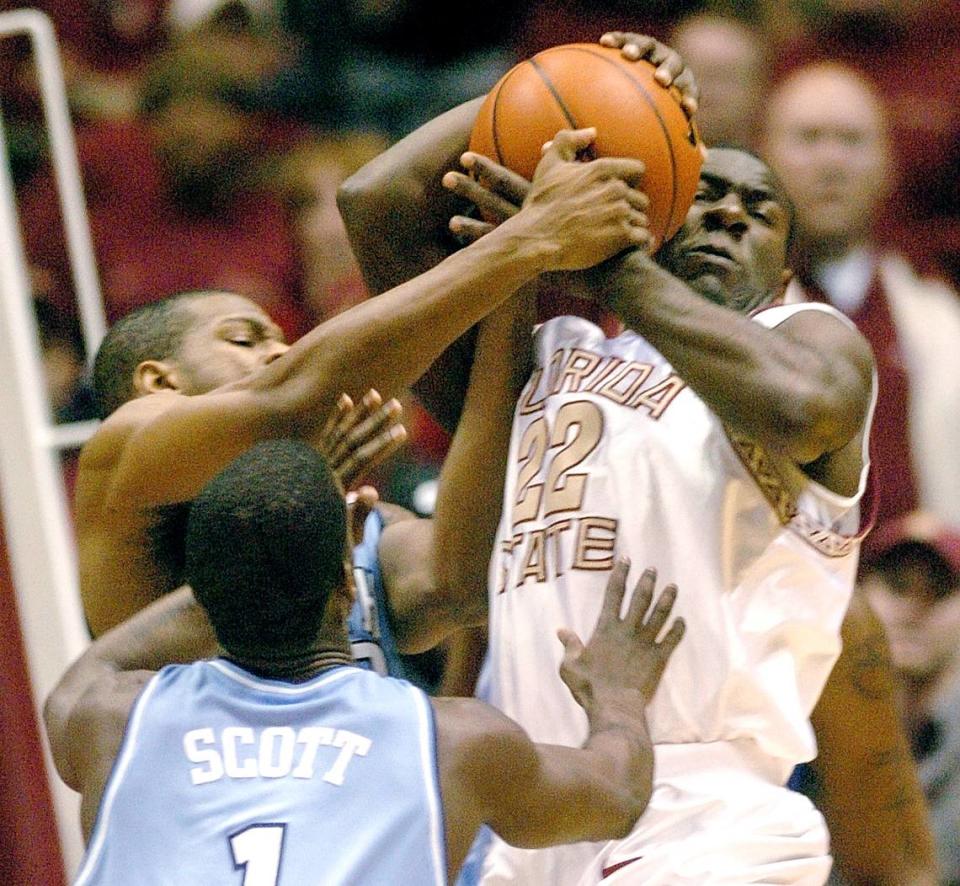
That was a lot of money in a time when major conferences were just beginning to distribute to their member schools annual payouts in the seven figures. By 1990, the ACC’s eight schools were receiving about $2.5 million each from the league, much of it coming from basketball television revenue. ACC basketball at the time carried an enviable kind of gravitas.
It was the conference of David Thompson and Michael Jordan and Len Bias; of those impassioned rivalries along Tobacco Road; of two national championships in the 1980s and the emergence of a national power at Duke. ACC basketball was valuable, a coveted TV commodity, and in those days it was everywhere, the only college sports property on Raycom, CBS, ABC and ESPN.
And perhaps best of all for the ACC, there was no sign that would ever change. College basketball was as popular as ever. The NCAA Tournament, which expanded to 64 teams in 1985, was becoming more and more of a gold mine. The college game was rife with stars and storylines and captivating coaches, from Dean Smith to Bobby Knight to the cast of characters in the Big East.
Indeed, “as we head into the 1990s,” wrote Irwin Smallwood in the Greensboro News and Record, “no one can deny that college basketball is as much a part of the TV entertainment world as ‘Designing Women,’ ‘Newhart’ and ‘L.A. Law.’” Florida State wanted in on the ACC’s basketball TV revenue. It soon seemed like an especially prescient decision.
In the spring of 1991, the ACC agreed to a six-year extension with Raycom and Jefferson Pilot worth $80 million. The deal, for the broadcast rights only to ACC men’s basketball games, became the envy of other leagues. Swofford, then in charge of the conference’s television committee, spoke with a sense of satisfaction at the ACC’s spring meetings in 1991.
“This conference prides itself on being a step ahead of others in television matters,” he said.
Florida State hadn’t yet begun ACC competition. That came during the 1991-92 season in basketball, and in ‘92 in football. Even so, the conference’s new TV deal in the spring of ‘91 allowed FSU to approve an athletics department budget of almost $16 million, its largest to date. For the first time, FSU projected a surplus.
“The conference affiliation really secures the future of Florida State athletics,” Bob Goin, the FSU athletics director, said at the time. “That’s what it should do. I can’t say enough about it.”
And that’s how the marriage went, for a while. With something like a state of bliss — if not emotionally then at least financially.
Football’s growth changed everything
It has become fair to wonder whether the ACC was always going to be doomed, given how the economics of major college sports have evolved. There’s a sound argument to be made that can be summarized quickly: The television value of college basketball plummeted, and particularly that of the sport’s regular season. The opposite, meanwhile, happened in football.
And in a college sports world whose riches are determined by football TV ratings, what hope did the ACC ever have? Demographically, after all, the conference cannot compete with the Big Ten and SEC. Those leagues are made up almost entirely of large state schools with deep alumni bases. In the ACC, meanwhile, five of the league’s 14 full-time members are private, smaller schools.
Even some of the conference’s flagship public schools, like UNC and Virginia, are relatively small, and known for their less-than-passionate football followings. The analysis could be that simple: If football TV money was going to become the dominant factor in a conference’s bottom line — and it has — then perhaps the ACC never had a chance to compete with the Big Ten and SEC.
Such a conclusion, though, belies the reality that the ACC had a window. A narrow one, perhaps, but a window, nonetheless. During the 2005-06 fiscal year, the ACC was the nation’s richest conference. It generated $20 million more than the Big Ten and $10 million more than the SEC. The ACC distributed an average of almost $11 million to its members.
The league had just expanded again, targeting a combination of TV markets and football achievement and potential. The addition of Miami, a national football power throughout the 1980s and 90s and into the early 2000s, was seen as a major coup. Virginia Tech, another new arrival, had emerged as a consistent national contender in football.
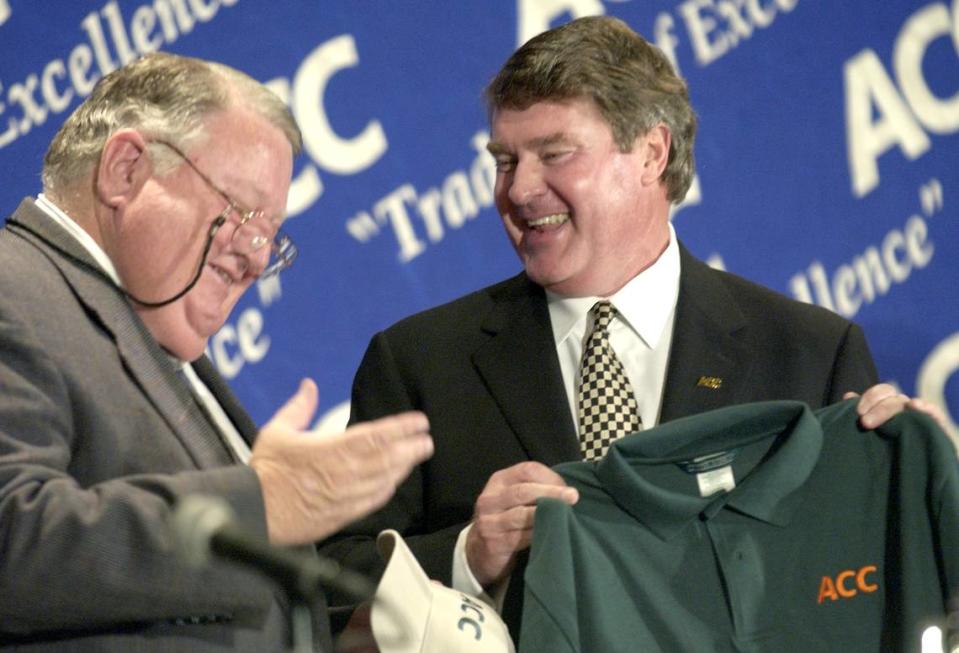
And if nothing else, the addition of Boston College gave the ACC a presence in a major northeast media market. There was not only reason for optimism, but elation. During the ACC’s spring meetings in 2006, conference officials and school administrators attended a glowing presentation from Dave Brown, who was in charge of ESPN and ABC’s college football broadcasts.
Brown raved about the new-look ACC, and told league officials that the conference was ESPN’s highest-rated during the 2005 season. Miami’s game at Virginia Tech was the third-highest rated in ESPN history. The season-opening primetime game between FSU and Miami, meanwhile, was ABC’s highest-rated of the season.
(That was also the game when, upon the camera scanning the crowd and landing upon Jenn Sterger, Brent Musburger famously — or, infamously — said, “Fifteen-hundred red-blooded Americans just decided to apply to Florida State.”)
It was good, then, to be a part of the ACC. UNC won the 2005 national championship in men’s basketball, in a time when that sport still commanded significant television investment, relative to football. In football, the 12-team ACC was a ratings hit in its first year. The league’s inaugural championship football game, an FSU victory against Virginia Tech in a full stadium in Jacksonville, was ABC’s fourth highest-rated game of the season.
“I can tell you we’re very pleased with the ratings the ACC put up last year,” Brown said at the 2006 spring meetings. “They were terrific.”
Swofford, then almost a decade into his tenure as ACC Commissioner, looked like a wizard. He’d led the league’s expansion from nine schools to 12. He’d put the conference in a position to thrive, from a football TV perspective. With FSU and Miami on opposite sides of new divisions in football, it was fair then to envision years of ACC championship games between the two.
And in some alternate dimension, maybe it happened. Maybe the Seminoles and Hurricanes played for the league title every year, or every other year, or maybe every third or fourth year. Maybe they were both good enough, at the same time, for their regular season games to matter, too. Maybe their rivalry remained what it was throughout much of the 1980s and 90s.
Maybe in that different world there were more Wide Rights and more top-5 match-ups; more unfiltered Musburger hijinks and more games everyone wanted to watch. In this one, though, it never happened that way. FSU entered into a football malaise after that 2005 league championship. Miami in almost 20 years of ACC membership has never been what it was before joining. The Hurricanes have won a league title in men’s basketball, but are without one in football.
And the promise of regular FSU-Miami ACC football title games? The next one will be the first.
A window closed.
A bad time for a football slump
In any other time in college athletics history, the ACC’s relative football slump in the mid-to-late 2000s might not have mattered as much, in a financial sense. But this was not any other time. This was, to the contrary, a time when football strength, and having attractive football games to sell, as TV inventory, came to matter more than anything.
It was the worst time for a conference’s most valuable football brands to enter into prolonged dormancy but that’s what happened, and quickly. FSU during the 2006 season endured a 30-0 home loss against Wake Forest, and became mired in mediocrity in Bobby Bowden’s final seasons. Miami became the nation’s most consistently disappointing program. Virginia Tech, while maintaining its presence in the top 25, was never quite what it was in the early 2000s.
Clemson, meanwhile, had not yet elevated its program. And no other ACC school emerged.
If the ACC’s first football championship game was a hit, its second — a snoozer of a 9-6 Wake Forest victory against Georgia Tech — was a comparative disaster. Boston College then made the next two league title games after that, losing both to Virginia Tech. With FSU and Miami down, and with nobody else picking up the slack, a national narrative began to take hold:
ACC football was weak. A joke. Fair or not, the narrative persisted. It still does, in a way.
While the conference entered into a period of football struggle it could not have foreseen, the Big Ten Network launched in August 2007. At the same time, that conference entered into a new, separate contract with ESPN. For years, Swofford and the ACC had prided themselves on leading the nation in college sports “television matters,” as Swofford had put it more than 15 years earlier.
Now all the league could do was watch.
“I was with Jim last week, and I told him, ‘Congratulations,’” Swofford said in 2007, referring to his friend and rival, Jim Delany, a fellow UNC alum who was then the Big Ten Commissioner. “It’s one of those things where the Big Ten will be a trailblazer, and that’s to their credit.
“The rest of us will get to learn a bit from what they do because of the timing.”
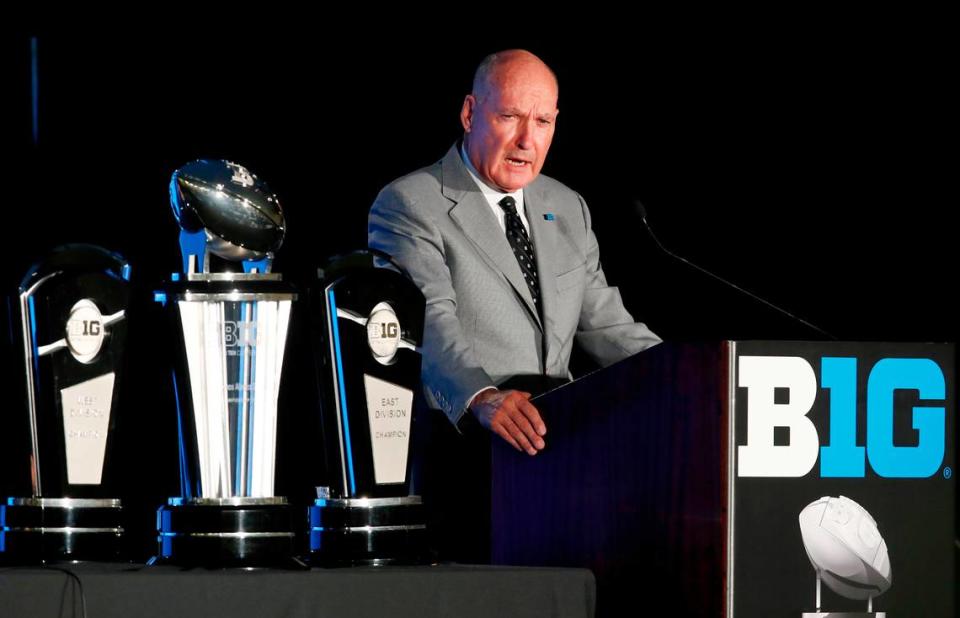
The Big Ten Network proved to be a financial success beyond anyone’s imagination. Two years after its launch, the SEC began a 15-year deal with ESPN worth more than $2 billion, in addition to a separate deal with CBS that guaranteed $55 million annually over the same time. Between 2006 and 2010, the ACC went from being the nation’s wealthiest conference to a distant third, and entered into a financial hole, relative to its peers, that has only grown deeper.
In 2010, the ACC distributed an average of $11.7 million to its members. The Big Ten, meanwhile, distributed an average of more than $20 million, and the SEC more than $18 million. It took another four years for the ACC to catch up to those numbers, before the Big Ten and SEC again distanced themselves, in a financial sense.
By then, in 2014, Maryland had left the ACC for the Big Ten. The ACC, chasing TV markets, had added Pittsburgh and Syracuse. It entered into an awkward part-time relationship with Notre Dame, and replaced Maryland with Louisville. The conference agreed to a lengthy contract with ESPN, and its member schools signed a Grant of Rights agreement that appeared, on the surface, to make further defections an impossibility.
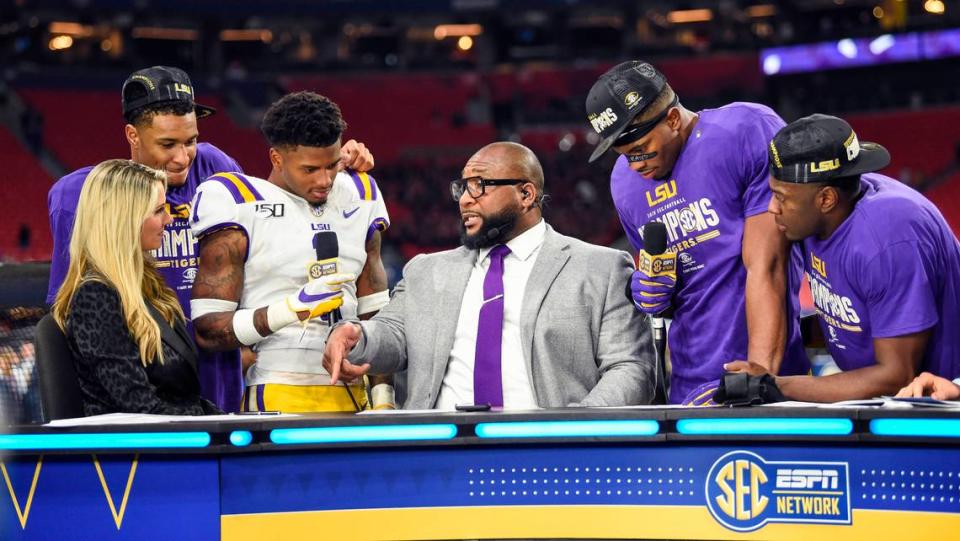
In 2014, the ESPN-backed SEC Network launched. In 2015, the Big Ten and SEC both became the first conferences to distribute average full-share payouts of more than $30 million to their members. In 2016, the ACC and ESPN announced a 2019 launch date for the ACC Network. It was a long three-year wait. The revenue disparity grew wider. And wider. By 2018, schools in the Big Ten were receiving more than $50 million each, and more than $40 million in the SEC.
The so-called Power Five was fast becoming a misnomer. Two conferences had separated themselves. The race for survival was on. An almost 30-year marriage began to fracture.
Record ACC revenue is still not enough
In the 20 years between 2002 and 2022, ACC revenue increased by more than 528%, from $98.1 million to $617 million. The conference continues to set revenue records, almost every year. The problem, for the ACC, is that while 528% revenue growth over two decades might sound impressive, it is not compared to its longtime rivals and peers.
During the same span, SEC revenue increased by 576%, and Big Ten revenue by 709%. They both generated more than $800 million in revenue during the 2021-22 fiscal year, and both are in a race to become college sports’ first billion-dollar conference. They will both soon cross that threshold, and both recently entered into new TV deals that will make them even wealthier.
Those deals will expire before the ACC’s ESPN contract ends in 2036 — though Florida State claims in its lawsuit that the conference’s deal actually ends in 2027, unless ESPN decides to extend it. Regardless, the financial disparity between the ACC and Big Ten and SEC will continue to grow, which is why FSU, and now Clemson, is attempting to sue itself out of the league.
The ACC is involved in five lawsuits, two with FSU and two with Clemson. The other is in Florida, where Ashley Moody, the state attorney general, has sued the conference in an attempt to make its deal with ESPN a public record. Florida State has based several of its claims on how the ACC negotiated that contract, with FSU arguing the conference failed its membership.
Some of those arguments seem to stretch legal credence. Others read like the grievances of a scorned partner, with FSU alleging that Swofford, now three years into retirement, negotiated in bad faith with ESPN to protect Raycom, where his son happened to hold an executive position. If tied to the Grant of Rights, which the ACC argues is legally binding and enforceable, FSU’s lawyers have said it would cost the school between $570 million and $700 million to exit the conference.
That would be more than FSU has received from the ACC throughout its 33-year membership, which officially began in the summer of 1991. Over the past 20 years, FSU has received $420.3 million from the ACC. The conference sent $38.6 million to the school in 2022, but SEC schools received an average of almost $50 million that year, and Big Ten schools almost $60 million.
Thus the rush toward greener pastures, wherever they might be and however and whenever the Seminoles might get there. For many in Tallahassee, the divorce can’t come soon enough. There is a sense there, whether grounded in reality or not, that FSU has been victimized; that the ACC and most of its membership has taken more from Florida State than they’ve given.
That was not true through the first 10 to 15 years of FSU’s ACC membership, when basketball revenue carried more weight. But in more recent years? Indeed, Florida State has proven its status as a ratings draw in football. In 32 ACC seasons, it has won the conference championship 16 times. When FSU joined the ACC, the league made more TV money from basketball. Now football accounts for 80% of the conference’s television income. Certainly, FSU is responsible for a lot of it.
Already, rumors abound of remarriage. FSU would be a commodity to another league.
“People that I was close to when I was raising money, they call me about every other day,” Charlie Barnes, a longtime executive with Seminole Boosters, said during a recent interview over lunch in Tallahassee. The inquiries, Barnes said, go like this: “What’s going to happen, what’s going to happen? I’ve heard that we’re joining the Big Ten. What’s the inside dope?”
Barnes is among a dwindling number of people who held influential positions at and around FSU in 1990, when the school was deciding what to do. In those days, and for years before and after, Barnes accompanied Bobby Bowden on a statewide booster tour.
For 34 years, Barnes drove the Seminoles’ folksy and beloved football coach all around Florida, from Jacksonville to Ocala to Orlando to Fort Lauderdale, and everywhere else. In the early days and through the early-to-mid 90s, they’d ride through the night and stop at gas stations to fill up, and make a run inside for cigars and chewing tobacco.
During one of those stops in 1990, around when the SEC was still considering Arkansas and FSU, Barnes asked Bowden what he preferred: the ACC, where everyone knew FSU would have its way, or the SEC, which Bowden grew up adoring as an Alabama native. As Barnes remembers it, Bowden said, “We have enough talent now. I don’t really care.” In the SEC, though, he said, “Us and Arkansas — we’re gonna be the pledge class,” and as an aging fraternity man, Bowden knew life could be rough on pledges.
Barnes, for one, wanted the SEC. So did the majority of FSU fans, he said. Instead, he found himself at his first ACC basketball tournament a couple years later, there to witness the spectacle and the pageantry. The basketball money was good and the tournament still mattered, financially and otherwise, but Barnes felt out of place. He wasn’t alone.
“The ACC viewed us like Mr. Drysdale viewed the Clampetts,” Barnes said, referencing the “hillbillies” of The Beverly Hillbillies fame. At Barnes’ first ACC Tournament, “everybody there was resplendent in blue blazers and the khaki pants. They all look like ACC people.
“And here comes our people. Oh, my God. They come in looking like a gypsy caravan.”
The cultures never quite melded. The day Florida State accepted its ACC invitation in 1990, the school fielded hundreds of requests for basketball season tickets. There was anticipation, too, about getting in on the ACC Tournament. Thirty-four years later, college basketball isn’t what it was. ACC Tournament tickets are now available with ease. What was sacred no longer is.
The night after Barnes shared stories of touring Florida with Bowden, of raising money for Seminole Boosters for decades, FSU hosted N.C. State in men’s basketball in a mostly-empty Donald L. Tucker Center. It made for a depressing scene. Not far down the street, meanwhile, a massive renovation project had begun at Doak Campbell Stadium.

When FSU joined the ACC, the stadium still retained some of its charms. It was known in those days as The Erector Set. The arrival in the ACC, though, allowed FSU some of the financial resources to make it spiffy. A brick facade soon surrounded the exterior. Then came the addition of 20,000 seats.
It became a college football palace in the 1990s, when the Seminoles won the first two of their three national titles. By late February, the stands on the press box side had been demolished. A large number of longtime season ticket holders had been displaced. A bare, orange-tinted plot of dirt remained where the stands used to be, an odd and surreal sight.
FSU is rebuilding that half of the stadium and replacing the old with what Seminole Boosters describes as “a number of new, modern seating experiences.” There will be luxury suites and club seats and, for a price, those who lost their old seats can buy the newer, more expensive ones. A lot of people aren’t happy about it. Especially those who watched what Bowden built from seats now gone.
But that’s what progress looks like. That’s the pursuit of more. In Tallahassee, knocking down almost half of a football stadium has been the easy part in recent months. The ACC’s Grant of Rights has proven sturdier, at least for now.

 Yahoo Sports
Yahoo Sports 
